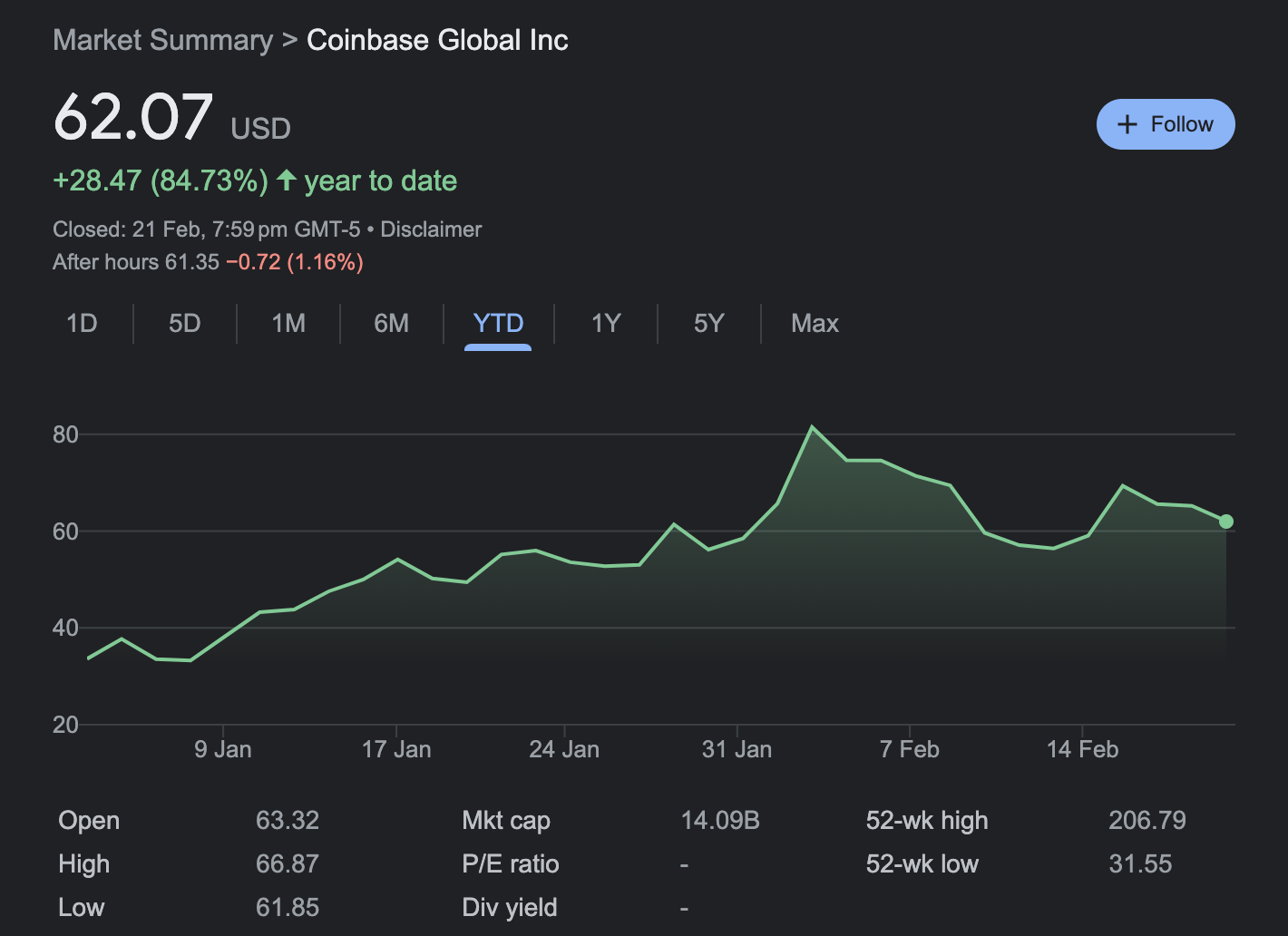Table of Contents
The current escalation of tensions between Coinbase global chief executive officer Brian Armstrong and US regulators can be explained by looking closer beyond the fourth-quarter numbers.
Due to a dramatic decline in cryptocurrency trade volumes around the end of last year, the largest US cryptocurrency exchange earnings have fallen significantly.
Trading volume at the cryptocurrency exchange was pressured by an industry-wide decline brought on by a succession of high-profile bankruptcies, which drove Coinbase Global to announce a loss in the fourth quarter on Tuesday.
The corporation generated net revenue of $605 million for the December quarter, compared to $2.49 billion a year earlier.
In comparison to a profit of $840 million a year earlier, Coinbase recorded a net loss of $557 million for the three months that ended December 31.
CEO Armstrong in a call with analysts said, "in the wake of FTX and other crypto company failures, we have seen increased regulatory scrutiny," but he added that the development will ultimately benefit Coinbase.
Trading activity at the cryptocurrency exchange fell to $145 billion in the three months to December during the market collapse from $547 billion a year earlier.
Read more: Ex-Coinbase Manager Pleads Guilty to "First" Crypto Insider Trading Case
Retail traders also drastically reduced their trading volume, which fell by almost 89% to $20 billion during the quarter.
The silver lining, though, was revenue from subscriptions and services, which benefited from significant interest rate increases, increased by nearly 33% to $282.8 million in the fourth quarter.
The cryptocurrency exchange projected subscription and service income in the first quarter between $300 million and $325 million, exceeding Wall Street projections of roughly $285.7 million.
Coinbase Risks Losing Revenue Sources
Beyond the earnings results, what might be even more concerning is the dimming picture for three crucial businesses that Coinbase has relied on to kickstart growth - coin custody, stablecoins, and staking, which have all come under heightened regulatory scrutiny.
Coinbase is also struggling to convince users that they can trust platforms with their coins, even as the effects of the cryptocurrency crash from last year are still being felt across the sector.
The expectations for Coinbase's non-trading business lines, subscriptions, and services, which prominently include cryptocurrency staking and custody services, were downgraded last week by JPMorgan and D.A. Davidson analysts.
In a research note, Chris Brendler with D.A. Davidson wrote, "while we still agree with (Coinbase) management's view that improved (regulatory) clarity and a level playing field should ultimately prove to be good, for both Coinbase and the sector overall, the near-term path looks increasingly treacherous."
Recent Securities and Exchange Commission (SEC) enforcement measures have caused some to wonder if Coinbase's custody and staking operations are in danger.
Rival exchange Kraken reached a settlement with the US SEC earlier in the month to shut down its American staking operation, in which consumers received token dividends.
Read more: FTX Japan Users Can Start Withdrawing From Tomorrow
Paxos Trust discontinued issuing a USD stablecoin with the Binance brand after being under pressure from New York officials.
Last week, the SEC also put up a proposal to tighten custody regulations for cryptocurrencies.
Although Coinbase hasn't been directly impacted, it's uncertain whether this will continue.
Regulators Circle on Crypto Exchanges
Coinbase stated in a January SEC filing that it plans to reduce operational expenses by 25% by the end of the next quarter.
Repeatedly, Coinbase has stated that its services are distinct from those that affected businesses provide and should not be impacted.
I’m in Washington D.C. and had a meeting canceled. Will be at the Dirksen Senate Office building snack bar for the next hour or so, if anyone wants to come chat about crypto and how we get crypto legislation + regulatory clarity this year.
— Brian Armstrong (@brian_armstrong) February 13, 2023
According to Owen Lau, an analyst at Oppenheimer, staking fees account for around 3% of Coinbase's overall revenue.
Moreover, it makes money through providing coin custody services and from stablecoin USDC, which it helped create as part of a consortium.
To minimise its reliance on trading fees, which are subject to the wildly fluctuating prices in the cryptocurrency market, Coinbase is attempting to diversify.
Although Coinbase's revenue diversification strategy is still in place, there are increased regulatory problems with two, and maybe all three, of its revenue sources.
Coinbase's Future Uncertain
Since the collapse of competitor FTX exchange in November, Coinbase has lost its market share.
This indicates that the uncertainty is already having an effect.
According to researcher CryptoCompare, while Coinbase's market share proportion increased from 5.9% in November to 6.5% in January, it has since decreased to 4.1% in February.
Binance is currently the largest cryptocurrency platform in the world, with a market share of around 60%.
Since the start of the year, Coinbase's shares have jumped over 80%, helped along by the broader uptrend in risk assets like tech companies and Bitcoin, the largest cryptocurrency in the world.
After falling by 85% in 2022, that is.

Compared to its closing record high in April 2021, the stock has slumped by roughly 80%.
DA Davidson's Chris Brendler, who downgraded the company's shares last week to neutral, noted, "obviously tough time for the industry, drawing negative sentiment from investors, regulators and politicians."
"A time of uncertainty for the company and stock price," he added.






